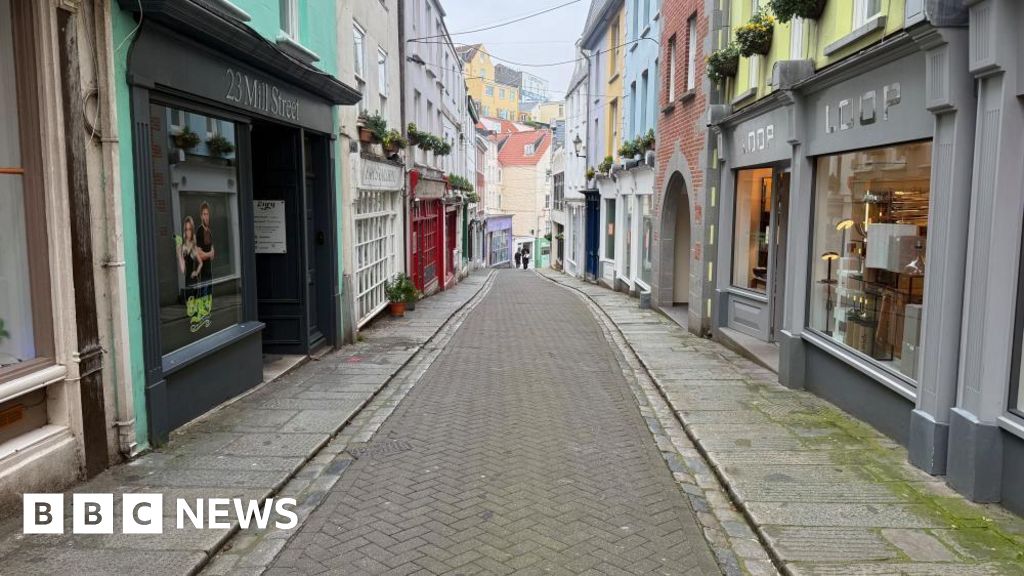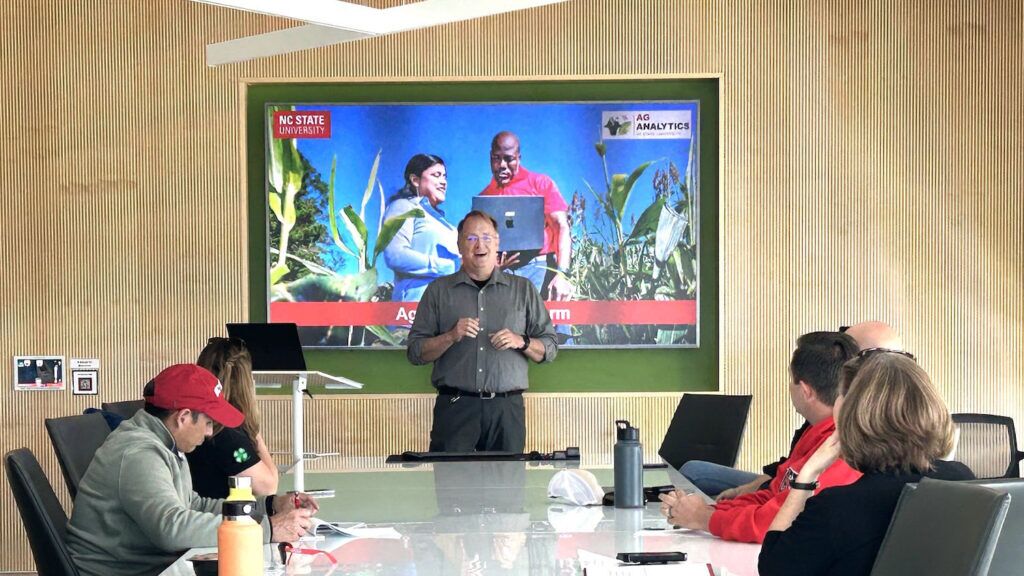Floristic assessment and soil-vegetation dynamics in an arid zone: a case study of the old Katameya-Ain Sokhna Road, Eastern Desert, Egypt – Nature

Ecological Assessment of Egypt’s Northern Eastern Desert: A Report on Biodiversity, Land Degradation, and Sustainable Development Goals
Executive Summary
This report presents an ecological assessment of an unprotected, hyper-arid region along the old Katameya-Ain Sokhna Road in Egypt’s Eastern Desert, focusing on vegetation dynamics, soil characteristics, and anthropogenic impacts. The study provides critical data for evaluating progress towards several Sustainable Development Goals (SDGs), particularly SDG 15 (Life on Land), SDG 13 (Climate Action), and SDG 3 (Good Health and Well-being). Key findings indicate significant biodiversity, with 75 plant species recorded, including 16 with medicinal value. However, this biodiversity is under threat from unregulated human activities, including quarrying and road construction, which directly contravene the targets of SDG 15 to halt biodiversity loss and land degradation. The presence of invasive alien species further threatens ecosystem integrity, a challenge addressed by SDG Target 15.8. Analysis of vegetation cover between 2014 and 2024 suggests complex dynamics, potentially influenced by the spread of invasive species. The report underscores the urgent need for integrated conservation and sustainable management strategies to protect this vulnerable ecosystem and align regional development with global sustainability targets.
1.0 Introduction: Context and Alignment with Sustainable Development Goals
Arid ecosystems are critical frontiers for understanding climate resilience and the impacts of desertification, central themes of SDG 13 (Climate Action) and SDG 15 (Life on Land). This report investigates the intricate relationship between vegetation and soil in Egypt’s Eastern Desert, a region experiencing escalating anthropogenic pressures that threaten its ecological stability. The study area, an unprotected zone, serves as a case study for the challenges in achieving SDG Target 15.3 (combat desertification and restore degraded land) and SDG Target 15.5 (protect biodiversity and prevent extinctions). By analyzing floristic composition, environmental drivers, and temporal changes in vegetation, this assessment aims to provide an evidence-based foundation for conservation policies that support sustainable land management and protect vital natural resources.
2.0 Methodology
The ecological assessment was conducted through a multi-faceted approach combining field surveys and remote sensing analysis.
- Field Survey: Twenty representative stands were selected in the study area in spring 2024. In each stand, floristic composition was documented, and plant species were identified.
- Soil Analysis: Composite soil samples from each stand were analyzed for 15 physicochemical parameters, including texture, pH, salinity (EC), and nutrient concentrations, to understand the edaphic factors influencing vegetation distribution.
- Vegetation Change Analysis: The Soil Adjusted Vegetation Index (SAVI) was calculated using Landsat 8 satellite imagery for 2014 and 2024 to assess decadal changes in vegetation cover, providing a metric for monitoring land degradation as per SDG Target 15.3.
- Statistical Analysis: Detrended Correspondence Analysis (DCA) was employed to elucidate the complex relationships between plant species, vegetation communities, and the underlying soil factors.
3.0 Key Findings: Biodiversity, Threats, and SDG Implications
3.1 Floristic Composition and Biodiversity (SDG 15)
The study documents a significant level of biodiversity, which is a cornerstone of SDG 15 (Life on Land).
- A total of 75 plant species from 27 families were recorded.
- The most diverse families were Asteraceae (15 species) and Fabaceae (6 species), which are known for their adaptation to arid conditions.
- The flora is dominated by perennials (73%) and chamaephytes (44%), life forms adapted to survive extreme environmental stress, highlighting the ecosystem’s natural resilience but also its vulnerability to severe disruption.
- The majority of species (71%) are Saharo-Arabian, underscoring the region’s unique biogeographical character.
3.2 Conservation Status and Threats to Life on Land (SDG 15.5)
The assessment reveals critical gaps and threats related to the conservation of terrestrial ecosystems.
- Lack of Data: A significant 89% of the recorded species (65 species) have not been evaluated by the IUCN Red List, indicating a major data deficiency that hampers efforts to meet SDG Target 15.5 to prevent the extinction of threatened species.
- Invasive Alien Species: The presence of invasive non-native species, including Beta vulgaris and Centaurea calcitrapa, was confirmed. These species pose a direct threat to native biodiversity and ecosystem functions, highlighting the urgent need for management actions as called for in SDG Target 15.8.
- Anthropogenic Pressures: Unregulated quarrying, road construction, and resource overexploitation are causing habitat destruction, directly undermining the goal of halting biodiversity loss.
3.3 Soil-Vegetation Dynamics and Land Degradation (SDG 15.3)
The analysis of soil and vegetation interactions provides insight into the drivers of ecosystem structure and the state of land degradation.
- Vegetation Communities: DCA identified four distinct vegetation groups, each correlated with specific soil conditions.
- Group A: Correlated with high salinity (EC, TDS, SAR), indicating specialized halophytic plant communities.
- Group B: Characterized by xerophytes adapted to aridity and nutrient-poor soils.
- Group C: Associated with higher organic matter and moisture retention.
- Group D: Influenced primarily by soil pH gradients.
- Vegetation Cover Change: SAVI analysis revealed an increase in the index range from 2014 (-0.52 to 0.86) to 2024 (-0.57 to 1.09). While this may suggest an increase in plant cover, it could be attributed to the proliferation of invasive species rather than the recovery of native vegetation, a critical distinction for monitoring progress toward SDG Target 15.3 on land degradation neutrality.
3.4 Medicinal Plants: A Link to Good Health and Well-being (SDG 3)
The region’s biodiversity holds significant potential for contributing to human health, aligning with SDG 3 (Good Health and Well-being).
- Sixteen of the recorded plant species are known to have medicinal properties and therapeutic applications.
- This finding highlights the importance of conserving biodiversity not only for ecological integrity but also as a reservoir of natural compounds for potential pharmaceutical development and traditional medicine, supporting SDG Target 3.8 concerning access to essential medicines.
4.0 Conclusion and Recommendations for Sustainable Development
The ecological assessment of the old Katameya-Ain Sokhna Road area reveals a fragile desert ecosystem rich in adapted biodiversity but facing severe threats from unsustainable human activities. The findings directly inform Egypt’s progress toward key Sustainable Development Goals, particularly SDG 15, SDG 13, and SDG 3.
The escalating habitat destruction, coupled with the threat from invasive species and a significant lack of conservation data, necessitates immediate and targeted action. To align development in the region with the 2030 Agenda for Sustainable Development, the following recommendations are proposed:
- Establish Protected Status: Designate the area as a protected zone to regulate destructive activities like quarrying and construction, directly supporting SDG 15.1 (ensure the conservation of terrestrial ecosystems).
- Implement an Invasive Species Management Plan: Develop and execute a strategy to control and eradicate invasive alien species in line with SDG Target 15.8.
- Enhance Biodiversity Monitoring: Prioritize the IUCN Red List assessment for the 89% of unevaluated species to create a baseline for conservation efforts and track progress on SDG Target 15.5.
- Promote Sustainable Land Management: Integrate findings on soil-vegetation relationships into land-use planning to prevent further degradation and promote ecological restoration, contributing to SDG Target 15.3.
- Support Research on Medicinal Plants: Invest in research and sustainable utilization of the 16 identified medicinal plants, creating value from biodiversity that supports both SDG 3 and local economic development.
Analysis of Sustainable Development Goals in the Article
1. Which SDGs are addressed or connected to the issues highlighted in the article?
- SDG 15: Life on Land
- Explanation: This is the most central SDG addressed in the article. The study focuses on protecting, restoring, and promoting the sustainable use of a terrestrial ecosystem (the hyper-arid desert of Egypt). It directly investigates biodiversity loss, land degradation, desertification, and the impact of invasive species. The article’s core purpose is to understand the “symbiotic relationship between the sparse vegetation cover and the underlying soil” to inform “targeted conservation strategies to safeguard biodiversity in this vulnerable region.”
- SDG 13: Climate Action
- Explanation: The article connects its findings to climate change, stating that “Projected global increases in aridity due to climate change are anticipated to alter the structure and dynamics of dryland ecosystems.” It also highlights that the desert flora serves as “genetic reservoirs for drought and heat tolerance, offering insights into adaptive mechanisms under climate change scenarios,” which relates to building resilience and adaptive capacity.
- SDG 12: Responsible Consumption and Production
- Explanation: The article identifies “unregulated quarrying, and overexploitation of natural resources” as primary anthropogenic threats to the vegetation and ecosystem. This directly relates to the unsustainable management and use of natural resources, a key concern of SDG 12.
- SDG 3: Good Health and Well-being
- Explanation: The research identifies and documents the value of local biodiversity for human well-being. It notes that “16 plant species, all of which exhibit medicinal properties with documented therapeutic applications” were found. The introduction also mentions the use of plants by indigenous communities for “traditional medicine,” linking biodiversity conservation directly to health resources.
2. What specific targets under those SDGs can be identified based on the article’s content?
- Under SDG 15 (Life on Land):
- Target 15.3: By 2030, combat desertification, restore degraded land and soil, including land affected by desertification, drought and floods, and strive to achieve a land degradation-neutral world.
- Justification: The study directly assesses land and ecosystem health by analyzing soil physicochemical properties (salinity, organic matter, texture) and tracking changes in vegetation cover over a decade (2014-2024). It discusses “accelerating desertification processes” driven by human activities.
- Target 15.5: Take urgent and significant action to reduce the degradation of natural habitats, halt the loss of biodiversity and, by 2020, protect and prevent the extinction of threatened species.
- Justification: The article’s primary goal is to address “escalating habitat destruction and anthropogenic pressures.” It conducts a floristic inventory (documenting 75 species), assesses the conservation status of each species using the IUCN Red List, and calls for “urgent conservation strategies.”
- Target 15.8: By 2020, introduce measures to prevent the introduction and significantly reduce the impact of invasive alien species on land and water ecosystems and control or eradicate the priority species.
- Justification: The study explicitly identifies the “presence of invasive non-native taxa, such as Beta vulgaris and Centaurea calcitrapa, which threaten native biodiversity.” It discusses how their spread “disrupts ecosystems by outcompeting native flora.”
- Target 15.6: Promote fair and equitable sharing of the benefits arising from the utilization of genetic resources and promote appropriate access to such resources, as internationally agreed.
- Justification: The article identifies 16 medicinal plants and highlights their “socio-economic value,” particularly for indigenous communities. This documentation is a first step in recognizing the value of these genetic resources, which is essential for benefit-sharing discussions.
- Target 15.3: By 2030, combat desertification, restore degraded land and soil, including land affected by desertification, drought and floods, and strive to achieve a land degradation-neutral world.
- Under SDG 12 (Responsible Consumption and Production):
- Target 12.2: By 2030, achieve the sustainable management and efficient use of natural resources.
- Justification: The article identifies “road construction, unregulated quarrying, and overexploitation of natural resources” as the “primary threats to vegetation.” This points to a lack of sustainable management of the area’s natural resources, which this target aims to address.
- Target 12.2: By 2030, achieve the sustainable management and efficient use of natural resources.
3. Are there any indicators mentioned or implied in the article that can be used to measure progress towards the identified targets?
- For Target 15.3 (Combat desertification):
- Indicator: Soil Adjusted Vegetation Index (SAVI): The article explicitly uses SAVI to measure changes in vegetation cover between 2014 and 2024. The specific ranges provided (“2014 (SAVI range: -0.523911 to 0.860437) and 2024 (SAVI range: -0.574714 to 1.08698)”) serve as a direct quantitative indicator of land cover change, a key component of the official SDG indicator 15.3.1 (Proportion of land that is degraded over total land area).
- Indicator: Soil Physicochemical Parameters: The study measures 15 soil parameters, including organic matter content, electrical conductivity (salinity), pH, and texture. These are direct indicators of soil health and degradation. For example, the low organic matter (0.07–1.31%) and high salinity in some stands (EC up to 131.20 dS/m) are clear metrics of soil degradation.
- For Target 15.5 (Halt biodiversity loss):
- Indicator: Species Richness and Composition: The documentation of “a total of 75 plant species distributed across 27 plant families” provides a baseline measure of biodiversity in the study area.
- Indicator: Conservation Status (IUCN Red List): The article assesses the conservation status of the recorded species, noting that “65 species (89%) remain unevaluated by the IUCN, while only 8 species (11%) are classified as Least Concern.” This directly relates to the Red List Index (official SDG indicator 15.5.1), highlighting both the current status and a critical data gap.
- For Target 15.8 (Manage invasive species):
- Indicator: Presence and Number of Invasive Alien Species: The article identifies “two alien plant species” and “four invasive species.” This count serves as a direct indicator of the scale of the invasion problem in the study area, relevant to SDG indicator 15.8.1 (Proportion of countries adopting relevant national legislation and adequately resourcing the prevention or control of invasive alien species).
4. Summary Table of SDGs, Targets, and Indicators
| SDGs | Targets | Indicators Identified in the Article |
|---|---|---|
| SDG 15: Life on Land | 15.3: Combat desertification and restore degraded land.
15.5: Halt biodiversity loss and protect threatened species. 15.8: Prevent and reduce the impact of invasive alien species. 15.6: Promote fair sharing of benefits from genetic resources. |
– Soil Adjusted Vegetation Index (SAVI) values for 2014 and 2024. – Soil organic matter content, salinity (EC, TDS), and pH levels. – Total number of plant species recorded (75). – Number of alien (2) and invasive (4) species identified. – Number of medicinal plant species with therapeutic applications identified (16). |
| SDG 12: Responsible Consumption and Production | 12.2: Achieve sustainable management and efficient use of natural resources. | – Qualitative identification of threats: “road construction, unregulated quarrying, and overexploitation of natural resources.” |
| SDG 13: Climate Action | 13.1: Strengthen resilience and adaptive capacity to climate-related hazards. | – Identification of flora as “genetic reservoirs for drought and heat tolerance,” which is an indicator of natural adaptive capacity. |
| SDG 3: Good Health and Well-being | (Implied connection to ensuring healthy lives and promoting well-being) | – Documentation of 16 plant species with medicinal properties used in traditional medicine. |
Source: nature.com
What is Your Reaction?
 Like
0
Like
0
 Dislike
0
Dislike
0
 Love
0
Love
0
 Funny
0
Funny
0
 Angry
0
Angry
0
 Sad
0
Sad
0
 Wow
0
Wow
0



















































.jpg.webp?itok=0ZsAnae9#)























